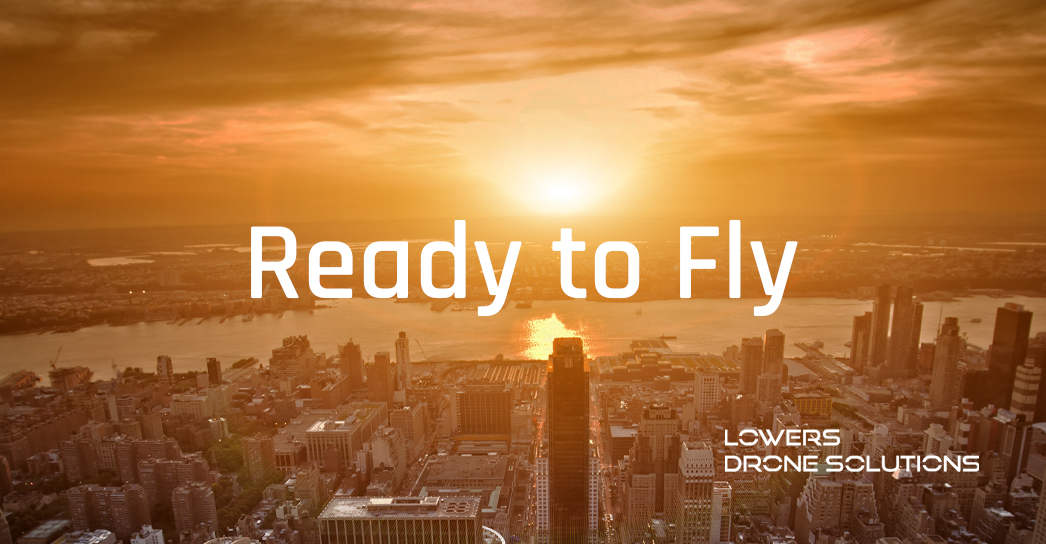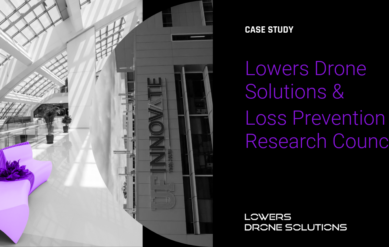
This blog series explores the evolving intersection of drones, data distribution, and the global insurance marketplace. Its goal is to provide brokers, underwriters, engineers, and adjusters clear insights into why and how a successful drone program can create growth opportunities – for both their business and that of their clients. Additionally, risk managers and insurance professionals will be able to apply the insights contained herein to support their own unique risk management efforts.
First up, a look at why the appeal of drones is more than just a passing fad (and what it means for the future of your business).
Interest in UAV/UAS (drones) has grown exponentially over the last decade. Driven by a combination of maturing technology, cohesive regulation, and recreational appeal, business owners and the insurance sector are now beginning to embrace drones for the commercial utility, improved efficiency, and real-time data advantages they provide.
In 2016, Goldman Sachs released a report projecting that, by 2020, the addressable drone market would exceed $100 billion. In their report, they noted very specifically that the fastest growing segment in this addressable market was on the commercial services side. Fast-forward to 2022, and – pandemic notwithstanding – the data has been validated.
Leading data firm Research & Markets published their own extensive Drone Services Market Global Forecast in September 2021 and in it, they projected that the market for commercial drone services would jump from $13.9 billion to $40.7 billion by 2027. There’s a tendency for projections like these to feel hyperbolic or self-fulfilling, but the significance of these numbers can’t be understated – the drone market is exploding.
What does that look like in the U.S.? As of May 22, 2022, the Federal Aviation Administration (FAA) statistics tracking Unmanned Aircraft Systems (UAS) listed 856,153 registered drones. Of that total, 315,437 were designated for “commercial” use. While the numbers don’t specifically show how the drones are being deployed or by whom, any educated guess would likely find at least one right answer (think: law enforcement and security, surveying and mapping, last-mile delivery, and media). The insurance implications of this FAA data – and these educated guesses – vary widely, but for brokers, underwriters, and insurers, the FAA’s comprehensive FY 2021 Q4 UAS Activity Report provides a few hints.
Highlighted first in the report are a number of grants given to universities like Embry-Riddle Aeronautical University and Mississippi State, to broadly support technology development. Next, the report describes meetings that illustrate the strides being made on the regulatory side. But it’s the additional thought leadership and market support activity that provides the insurance industry its best evidence on the breadth and depth that drones have and are being integrated into the U.S. business ecosystem and their potential impact.
In Q4 alone, members of the FAA UAS team:
- Collaborated with their international counterparts on best practices for Beyond Visual Line of Sight (BVLOS) guidelines, research, and data sharing (meaning, a drone operator can fly the drone beyond where they can still see it – gas pipelines, forest fires, surveillance, etc.)
- Took part in drone simulations with private sector delivery companies
- Liaised with law enforcement on future training protocols
- Discussed noise compliance and environmental impacts of drones
- Supported the 3rd Annual National Drone Safety Awareness Week for recreational enthusiasts
Namechecked in the Q4 report are companies like the SpaceX Corporation and UPS Flight Forward, agencies like the North Carolina Department of Transportation and the Civil Aviation Authority of New Zealand (among many other similar international governing bodies), membership organizations like the International Association of Chiefs of Police, the Drone Racing League, and more.
From our seat at Lowers Drone Solutions, the calculus on all this federal activity does not sound like – pardon the pun – some basic, fly-by-night math. This work is clearly part of a long-term strategy to evolve the future capability, application of, and enthusiasm for drones beyond just the military and hobbyists in the U.S.
And while the drone market may be dominated by the U.S. at the moment, recent guidelines passed on January 1, 2021, were adopted by the European Union’s 28 members (as well as Iceland, Switzerland, Lichtenstein, and Norway) to standardize drone usage for commercial and recreational use. This ruling enabled businesses of all kinds to take advantage of drones for commercial use. Lloyd’s pointed out the insurance implications of drones way back in 2015, and Business Insider recently doubled down in its Insider Intelligence missive, citing drone applications not only for insurers, but in several high-risk industries like mining and construction, but also commercial agriculture. If you’re wondering why agriculture might be high-risk, consider that the UN predicts the population will swell to over 9.7 billion people by 2050 – that would require a 69% increase in production to feed them. A major natural disaster, cyber hack, supply chain, or other business interruption event could be catastrophic.
In a post-pandemic world, the most successful companies – no matter their size, where they are, or what they do – must balance stability and resilience while also remaining flexible and fast. It’s a tall task, especially when new layers of digital transformation tools, human capital questions, security concerns, supply chain woes, and rising inflation are also on the menu. But drones are playing an important role in that transition for companies looking to stay above it all, and insurers need to take notice.
As this series continues, we’ll dig deeper into these themes. If you’re a broker, underwriter, engineer, adjuster, risk manager, or insurance professional, the takeaway, though, should at this point be clear:
Drones are no longer a trend. It’s time to consider what a comprehensive drone program looks like – and why it matters to the future of your business.
Coming Up: Here’s a quick look at the topics we’ll explore next.
- Efficiency
Drones can be deployed quickly post-loss, but an effective drone program means getting out in front of risk – whether that’s the impending storm season, insurance renewal, or a pre-purchase inspection. For brokers and underwriters, this efficiency is a sweet spot – it can help better qualify an applicant and speed up the claims process through actionable data, and for the engineers and adjusters, a pre-risk survey helps with reconstruction and loss adjustment. - Accessibility
Whether it’s the location of an insured or the data itself, accessibility matters to brokers, underwriters, engineers, and adjusters. If the area is potentially hazardous to personnel (pre- or post-loss), like an unstable structure or an area of restricted travel, drones with BVLOS can help. And when it comes to data, cloud storage and dashboard accessibility can speed up decision-making, saving time and money for all involved. - Performance
New technology and the use of various payloads make drones applicable to almost all scenarios. Whether it’s land surveys, repair estimations, historic imaging, or analysis, an effective drone program can streamline the work for engineers, adjusters, and other insurance professionals to help get the insured back on their feet. - Evidence
The DNA of an effective drone program includes improved data access. Driven by efficiency, and a natural by-product of accessibility, data access is also a pillar of performance, especially when it can provide irrefutable evidence to support litigation and subrogation cases. Used to help prevent or resolve claims, there are platforms now available that can give access to multiple stakeholders to distribute and validate data quickly, helping avoid disputes and improve confidence in decisions that are being made.



